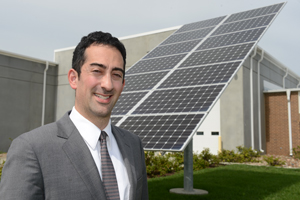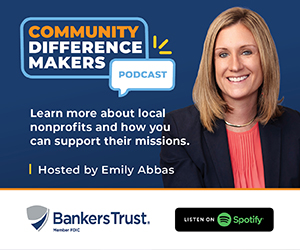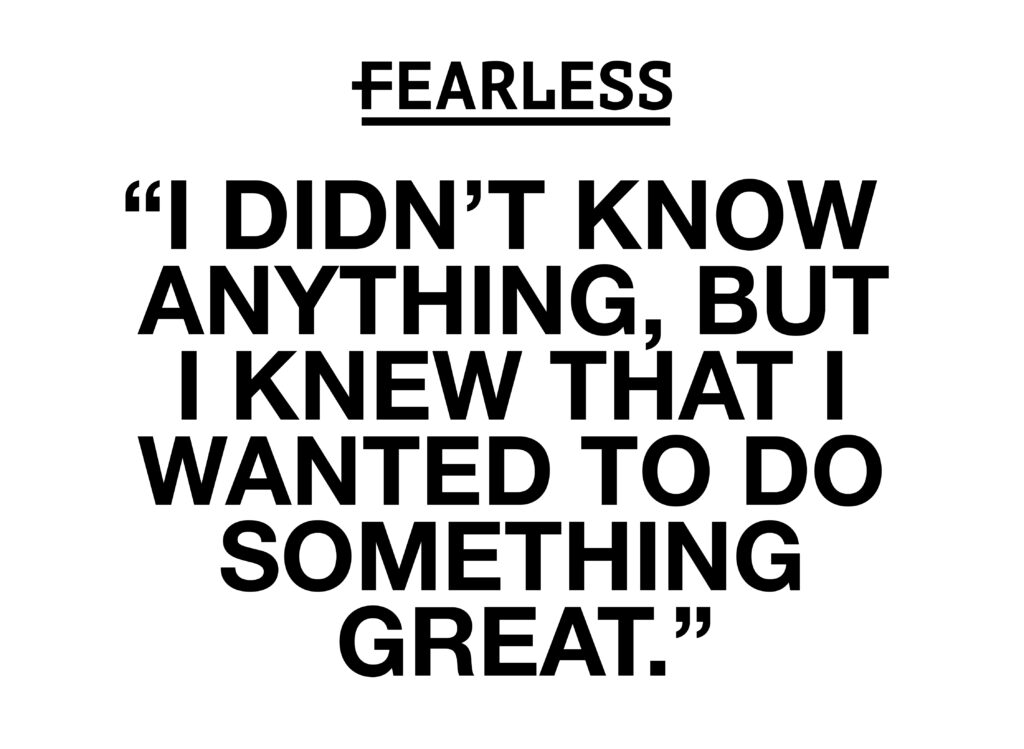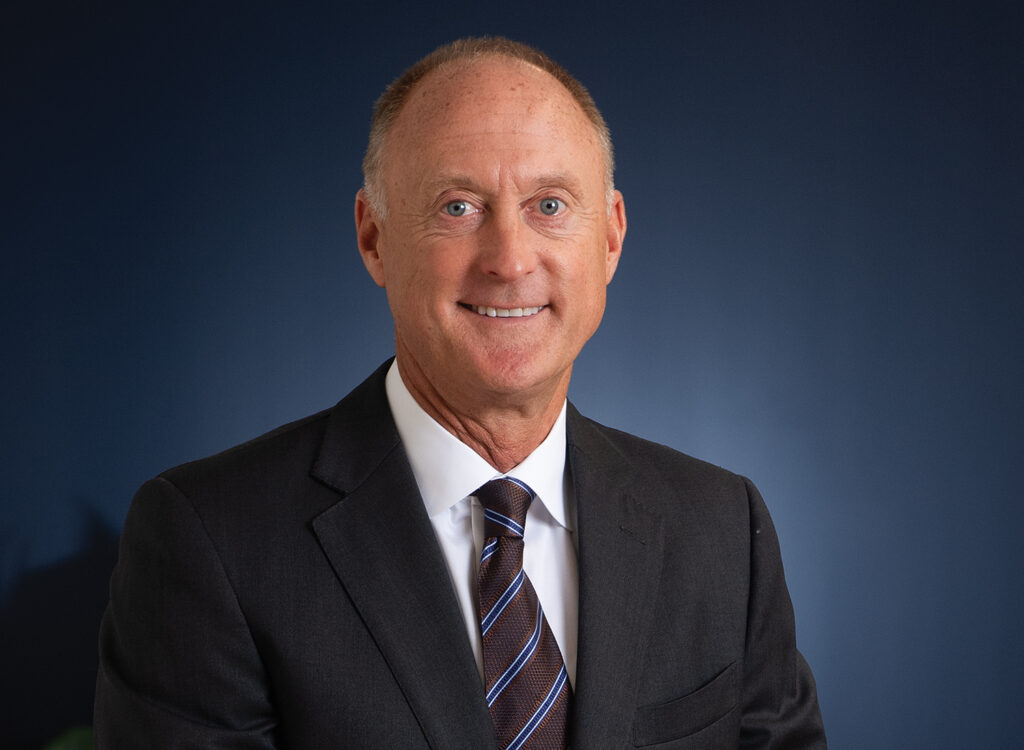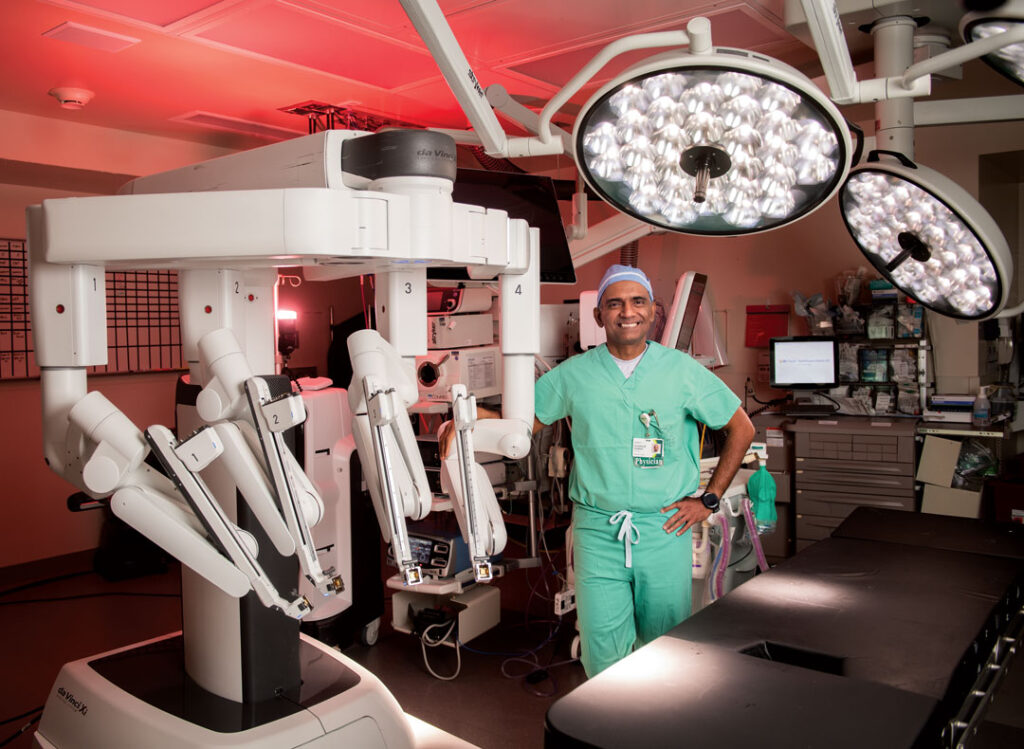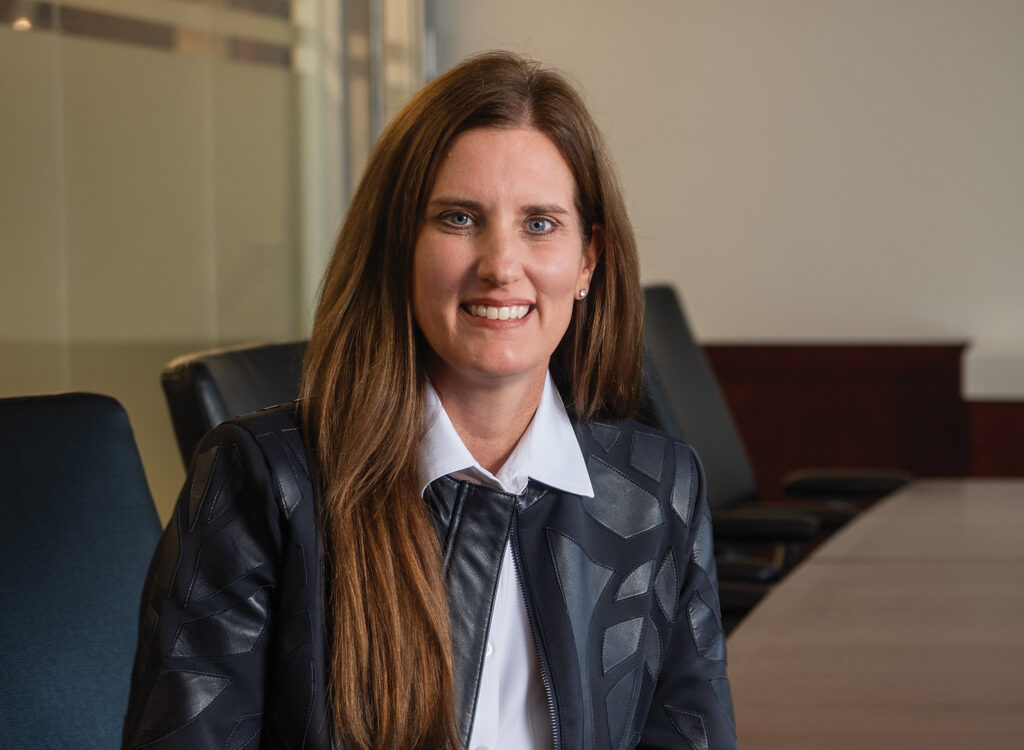Answer blowing in the wind?
Utilities, environmentalists square off again on renewable energy

Iowa’s rise to national prominence in wind energy and a push to develop a full-fledged solar energy industry has led to a long debate over how best to handle independent installations that are hooked up to the power grid.
The long and involved discussion is over how much utilities should have to pay for the extra power generated by, say, a wind turbine or solar array at a local business. And how that system should be hooked up to make sure it’s safe.
The Iowa Utilities Board has drawn praise from MidAmerican Energy Co. and environmental and consumer groups for its efforts since Jan. 7, 2014 to examine a whole range of issues surrounding independent renewable energy installations, known in the industry as “distributed generation.” Think of the Nevada school district’s wind turbines, or engineering firm MODUS’ solar array in Des Moines, for example.
The board sent out a notice of inquiry that has been guiding the discussion for nearly two years. Even the initial comment period drew 170 comments from utilities, utility associations, environmental groups, renewable energy advocates, and other organizations, businesses and individuals.
A central issue is net metering, which allows the owner of a wind turbine or a solar array to hook up to the grid, and to sell the extra power to the utility.
“There is clearly no agreement among inquiry participants on net metering,” the Iowa Utilities Board wrote.
“We are not trying to get rid of net metering. We are trying to make sure the tariff is equitable.” said Michael Fehr, vice president for regulation for MidAmerican Energy Co.
Many Iowans support the idea of renewable energy and welcome the installations. But there are financial and technical issues that have dogged the efforts for years.
MidAmerican, which has to answer to stockholders and customers, and to the utilities board, wants to make sure it doesn’t overpay for the extra power the systems send back to the grid. And it wants to be sure the connection is safe, said Fehr.
Environmental and consumer groups want to make sure landowners and businesses can easily generate their own power and sell the extra to the utility at a fair price. They also want safety, but they don’t want the utility to demand unneeded equipment that drives up costs.
In a state that leads the nation in some wind-energy statistics and is gaining in solar energy, this is a big deal. MidAmerican produces the most wind energy of any investor-owned utility in the nation, and it’s adding more generating capacity.
Various studies have trumpeted Iowa as a key state in the nation’s efforts to meet federal goals to cut greenhouse gases by adding renewable energy. Iowa’s utilities board dusted off an old debate when it opened a comment period last year, asking everyone to offer any comment they wanted about virtually any part of the debate. Subsequent requests narrowed the topic, and an Oct. 6 workshop will focus on very specific language about connecting the independent systems to the utilities’ grid. That is not likely to be the end of the debate.
In fact, the Iowa Environmental Council would like to see an in-depth study of the solar energy industry in Iowa, to lay out what’s at stake, before the utilities board goes far in a debate over how best to guide the landowners’ wind and solar projects.
“Solar energy is a very valuable resource, and there are a number of things to look at to understand this value,” said Nathaniel Baer, who follows energy issues for the Iowa Environmental Council. “For example, solar in Iowa typically provides energy when we need it most, on hot summer days. We know this is valuable to reduce stress on the grid, to avoid expensive energy from the market or other sources, and to reduce pollution. The study will help put dollar values on each of these, as well as a number of other sources of value.”
“Interestingly, it isn’t clear if Iowa has enough solar installed yet to conduct a good study, so we may need to wait a few years to even do the study,” Baer said. “While solar grew rapidly in 2014 compared to previous years, Iowa got a late start on solar and still isn’t moving as quickly as many states. We have the time to collect data and study the situation.”
“We’re not opposed to solar,” said MidAmerican’s Fehr. “It isn’t cost competitive for us. But we always look at it.”
As for others’ installations, he added: “We want it done safely and equitably for the other customers.”
The utilities board’s nearly 2-year-old fact-finding and rule-drafting process on “distributed generation” — industry speak for wind or solar power at a farm or business or private home, for example — has reignited debate about net metering, which allows a landowner or business to hook up to the grid and to sell any extra power generated to the utility.
When the Iowa Legislature and Gov. Terry Branstad pushed the issue by requiring the utilities board to write rules governing how utilities will hook up with these homeowners’ or businesses’ renewable energy systems, things kicked into another gear. Hundreds of comments have been submitted, including nearly 200 on the topic to be discussed at the workshop. A formal rulemaking will follow.
Advocates for solar and wind energy have been pushing for changes that make it easier for landowners to pursue the projects.
For Tim Dwight, president of the Iowa Solar Energy Association and owner of Integrated Power Corp., the issue is simple: “Property and homeowners have every right to produce their own energy.” A northeast Iowa conservationist agreed.
“I believe the Utilities Board should take the long view that increased use of solar and other renewable sources of energy will benefit the entire state, and that utilities and their traditional customers also will benefit from the stability of a more diverse power grid,” wrote Larry Stone, a longtime Clayton County conservationist. “Rather than resist the transition to more locally produced energy, utilities need to work to make the system more user friendly.”
Stone called for net metering to be available for all power customers. With net metering, a single meter measures net power generation and use. Any extra power is sold to the utility at the same retail price the customer pays — something the utilities have fought in the past because they could buy power cheaper at wholesale.
Fehr said MidAmerican supports net metering. “We are not trying to get rid of net metering,” he said. “We are trying to make sure the tariff is equitable.”
The tariff lays out what MidAmerican pays under various circumstances for the power it is required to buy from third parties that generate their own power.
MidAmerican wants to change the tariff to take more factors into consideration — like when the power is generated.
Net metering, as it stands, is unfair because the turbine or solar power owner is in effect subsidized by all ratepayers, Fehr said. That is largely because the owner is paying a retail rate for power, but also getting credit for the full retail rate when extra power is sold to MidAmerican. But when the owner of the turbine or solar panels sells power from the installation to MidAmerican, the same rate is paid.
That, in effect, means the third party isn’t paying for the power lines and poles needed to send that electricity to the utility, Fehr said. And MidAmerican sees that as unfair to the company and ratepayers. MidAmerican wants to pay less for the power coming in to offset the fact that the owner of the wind turbine or solar array isn’t paying for the equipment that sends the power to MidAmerican.
MidAmerican wants the utilities board to settle the question over rates, and a variety of technical issues with connections, before the so-called distributed generation projects really take off in Iowa. Other states, particularly California, Arizona and New Mexico, have faced many lawsuits over similar issues, something MidAmerican would like to avoid.
“We are hoping we get a path to clarify how this is going to play out in Iowa and get there without the polarizing approach of the other states,” Fehr said.
What is in play here politically is in the eye of the environmental group, or the utility. Environmental groups contend the utilities still are trying to kill net metering, in which meters run one way while power is consumed, and the other while power is produced. Utilities say they still have price and safety concerns, and they don’t want customers who don’t own solar panels or wind turbines to have to subsidize the cost of hooking those systems to the grid.
“Iowa has policies that encourage renewable energy development,” said Josh Mandelbaum, staff attorney at the Environmental Law and Policy Center. “From the business perspective, we’ve been a leader in wind energy. We have an opportunity to be a leader in distributed generation. The utilities board is exploring those issues. The board has taken a very thoughtful approach.”
Still, in his view, the utilities — especially MidAmerican — are still bent on fighting Iowans and Iowa businesses who want to produce their own power and sell the excess to the utility.
“The utilities are still attacking net metering,” Mandelbaum said. “It took a while, but they said they want to eliminate net metering. They were very careful not to be explicit about it, but it’s in the filings.
“They are placing unnecessary barriers in the way of customers that want to pursue renewable energy,” Mandelbaum said. “Renewable energy can create value in a lot of ways that should be considered. There certainly is an environmental benefit that isn’t included in the analyses now.”
Key Players and Terms:
Net metering:
A system that allows a landowner or business to hook up to the grid and to sell any extra power generated to the utility.
Distributed generation:
A system in which landowners can produce their own power and not just rely on the regulated, investor-owned utilities.
Environmental Law & Policy Center:
A Chicago-based nonprofit that follows environmental issues and has an office in Des Moines.
Iowa Environmental Council:
A Des Moines nonprofit that promotes clean water, alternative energy and sustainability.
Iowa Solar Energy Trade Association:
Headed by former Iowa Hawkeye and NFL football player Tim Dwight, this organization pushes for policies that will help the industry expand.
Iowa Utilities Board:
A governor-appointed panel that regulates Iowa’s investor-owned utilities, including MidAmerican Energy Co. and Alliant Energy Corp.
Grid:
The system that delivers power to homes and businesses.

